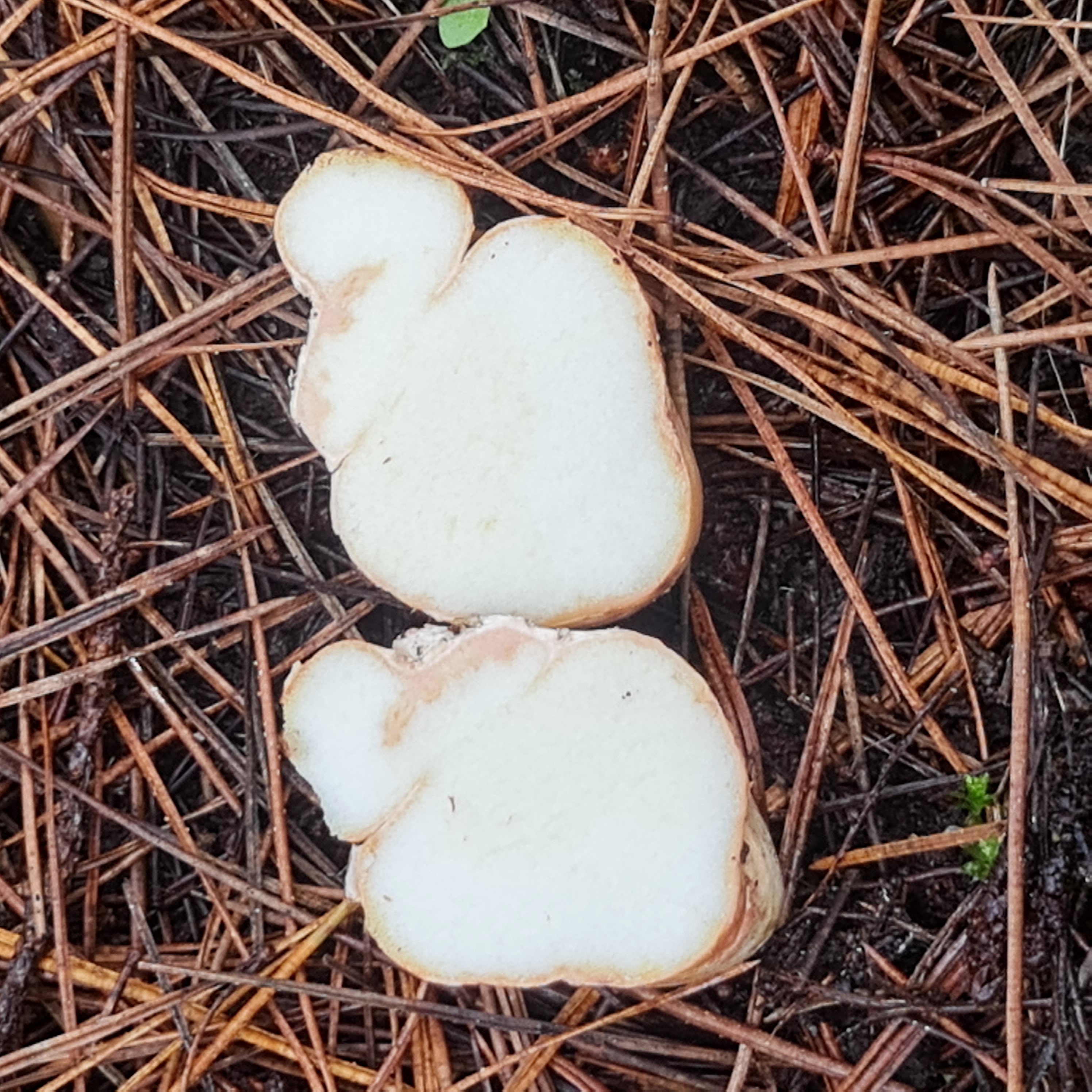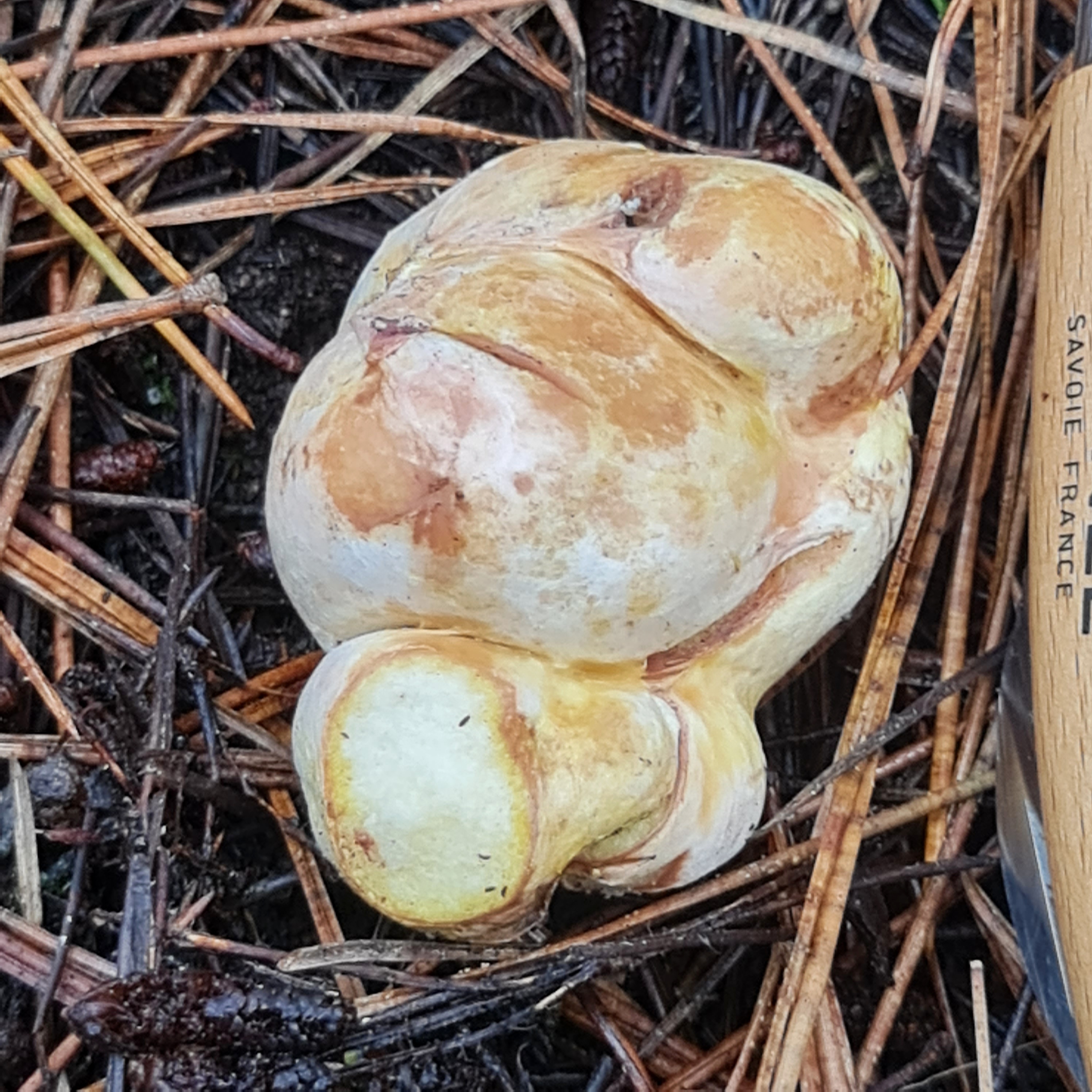
Division: Basidiomycota. Class: Basidiomycetes (Gasteromycetes). Order: Boletales. Family: Rhizopogonaceae
Just a note: You’ll see Rhizopogon rubescens in some texts. It’s the same as Rhizopogon roseolus that we list here.
When you’re out wandering in the Pine forest, you might see little balls scattered on the ground. A closer look might show you that a lot of them have popped up where animals have been digging. These are False Truffles, Rhizopogon species and have been introduced into the Pine forest to improve the health of the trees through their mycorrhizal associations with them. The we find here is the Yellow False Truffle (Rhizopogon luteus).

Like the other Puffballs that we find locally, they are edible and quite tasty when cooked. As with the other Puffballs, get them young and firm before the flesh starts to brown. Definitely don’t try and eat a shrivelled brown one – the spores will make you cough badly.

You will see Rhizopogon where animals have been scratching in the mulch of the Pine forest and along the edge of the treeline. The colour of the cuticle seems variable but I’ve noticed that the whiter ones are best. After extremely cold nights or several days of rain, they are a darker yellow/brown colour as they get waterlogged. They’re no good to eat like this as the inside is a dull gray.
The name ‘Rhizopogon‘ literally means ‘beard-like roots’ and you’ll see, in some specimens, beard-like mycelia still attached, especially if you dig up some soil with them. This is pretty fragile though and many that you’ll find won’t have this still attached.




Identifying False Truffles (Rhizopogon sp) – a summary.
If you’re under Pine trees and find some small white balls just sitting on, or slightly in, the leaf litter or soil, look for these details –
- Globular, 1 – 2.5 cm diameter body.
- Sometimes, fine, beard-like mycelium still attached
- Tough, rubbery skin that can be white and tinged with yellow or red.
- Firm white flesh inside immature specimens, becoming brown in mature specimens.
- Yellow or red tinge to the skin.
- Spore colour is yellowish white or even brownish
You’ll find these along with the usual Pine forest suspects such as Slippery Jacks, Saffron Milk Caps, Weeping Boletes and Laccaria.

Look alikes


Caution: Amanita mushrooms sometimes start off hatching from an egg shaped mass. Cut your specimen in half and make sure that there isn’t a mushroom shape inside. If there is or there is any doubt, don’t eat it! I’ll see if I can get a picture soon. Until then, here’s one I found online at the site Mushroaming:

For reference, Rhizopogon are listed on page 239 of ‘A field guide to Australian Fungi’ by Bruce Fuhrer.

